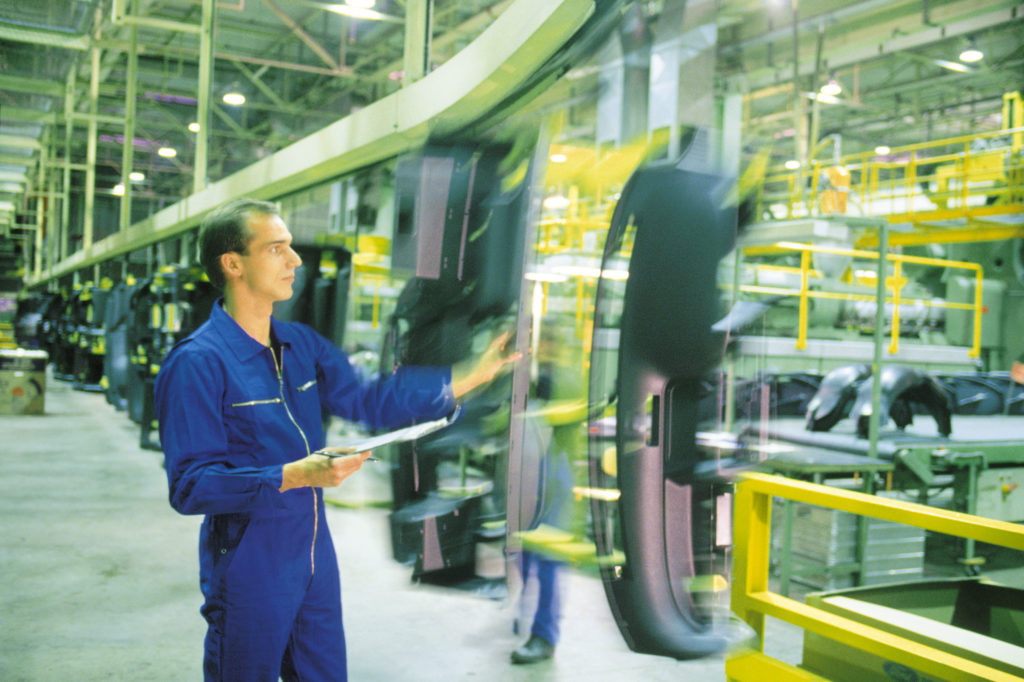Confidence in digital manufacturing is high among leading automobile manufacturers these days, and for good reason. Industry leaders are beginning to realize benefits from their investments in digital technologies and next generation robotics. Italian carmaker Maserati offers a prime example of how the benefits of digitalization can accrue. In Maserati’s case, everything from design to execution planning is implemented digitally. Maserati used to take 30 months to manufacture their Maserati Ghibli luxury sports sedan from start to finish. Thanks to digitalization, production time was reduced to 16 months, and Maserati succeeded in achieving a threefold manufacturing productivity increase.

Another successful application of digitalization can be found in South Carolina where BMW’s Spartanburg plant is equipped with more than 1,000 robots, all of which help to weld BMW X5 vehicle bodies with accuracy within a tenth of a millimeter. Robots also control BMW’s first fully automated hang-on assembly line, which attaches the doors, hoods, and hatches to the vehicles – a process that used to be entirely manual. The plant even has an automated engine marriage process and a new integrated paint process that uses 30% less energy and produces 40% fewer emissions.
Digitalization, and its proper implementation, is now emerging as a critical success factor for the industry. It means gathering more data and analyzing that data in a virtual context so that better decisions (and in many cases predictive decisions) can be made. It’s changing the way products are developed, built and delivered through ma¬chine learning, additive manufacturing and advanced robotics. And it’s changing the way products evolve through cloud technology, knowledge automation and big-data analytics.
Digital Transformation Provides a Competitive Advantage
Digital technologies present a billion-dollar opportunity for manufacturers to transform their vehicle production and re-orient their value proposition to meet the needs of today’s digital consumers. The competitiveness of the automaker increases because digitalization introduces even higher speed into product development lifecycle, thus enabling faster response to consumer demand.
Simulation is one digitalization tool which drives shorter innovation cycles, even when highly complex products and large volumes of manufacturing data are involved. In a simulation environment, a virtual model of each component in a device or machine is generated which allows designers and builders to explore what-if scenarios easily, inexpensively and quickly.
 These virtual models have come to be known as “digital twins”. They analyze the gathered data and then use it to run simulations and benchmark performance, allowing plant operators to pinpoint where gains can be made. By pairing both virtual and physical worlds (the twins), analysis of data and monitoring of systems can actively avert problems before they occur, which prevents downtime, develops new efficiency opportunities and enables planning for the future. Existing assets can be modeled against their digital twins and new designs can be tested in the virtual world, saving time, money and resources. Testing the interaction on a screen can verify a modification to a car engine, for instance, before new holes need to be drilled.
These virtual models have come to be known as “digital twins”. They analyze the gathered data and then use it to run simulations and benchmark performance, allowing plant operators to pinpoint where gains can be made. By pairing both virtual and physical worlds (the twins), analysis of data and monitoring of systems can actively avert problems before they occur, which prevents downtime, develops new efficiency opportunities and enables planning for the future. Existing assets can be modeled against their digital twins and new designs can be tested in the virtual world, saving time, money and resources. Testing the interaction on a screen can verify a modification to a car engine, for instance, before new holes need to be drilled.
According to Jeff Hall, Director of Automotive at Siemens USA, a connected digital factory and the big data it generates provides automakers with the insight and agility required to compete. “Digitalization enables automobile manufacturers the capabilities to increase productivity across their entire value chain, from design and engineering to production, sales and service. In concrete terms, this means faster time-to-market, greater flexibility and enhanced availability of systems on the plant floor.”
Getting Started
The integration of digitalization into operations is also a flexible process. Digitalization can be adopted at any pace that fits the needs of the organization. Some automobile manufacturers start with retrofits, or may begin by digitalizing one assembly line or even one machine at a time. However, a company chooses to begin its path to digitalization, the important thing is to start now.
About Siemens USA
Siemens Corporation is a U.S. subsidiary of Siemens AG, a global powerhouse focusing on the areas of electrification, automation and digitalization. One of the world’s largest producers of energy-efficient, resource-saving technologies, Siemens is a leading supplier of systems for power generation and transmission as well as medical diagnosis. With approximately 348,000 employees in more than 190 countries, Siemens reported worldwide revenue of $86.2 billion in fiscal 2015. Siemens in the USA reported revenue of $22.4 billion, including $5.5 billion in exports, and employs approximately 50,000 people throughout all 50 states and Puerto Rico.
Siemens Digital Factory
5300 Triangle Pkwy
Norcross, GA 30092


















